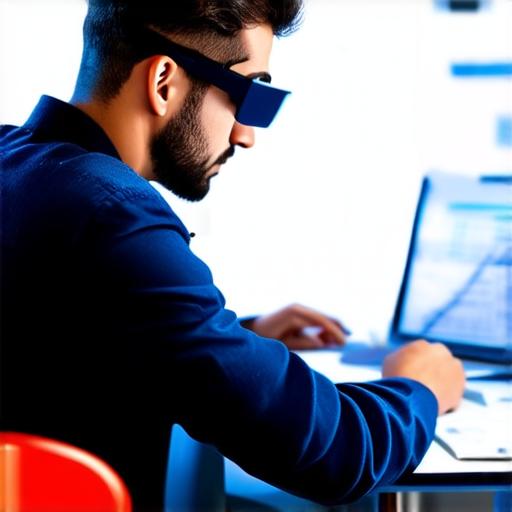What is Augmented Reality?
AR is a technology that allows users to see the real world overlaid with digital information in real time. It is different from virtual reality (VR), which creates a completely artificial environment for the user to experience. With AR, users can see both the physical and digital worlds at the same time, allowing them to interact with objects and surfaces in the physical world in new ways.
How does Augmented Reality work?

AR works by using a combination of sensors, cameras, and software to track the user’s position and orientation in the real world. This information is then used to overlay digital data on top of the real-world environment. There are several components that make up an AR system:
- Sensors: These include accelerometers, gyroscopes, and magnetometers, which are used to track the user’s movement and orientation in three dimensions.
- Cameras: These are used to capture the real-world environment, including objects and surfaces in the physical world. The cameras feed this information into the software, which processes it and creates a virtual representation of the real world.
- Software: This is responsible for processing the data collected by the sensors and cameras and overlaying digital information on top of the real-world environment. The software uses computer algorithms to create an interactive 3D model that can be viewed through a device such as a smartphone or tablet.
Once all these components are working together, the AR system can track the user’s position and orientation in the real world, allowing it to accurately overlay digital data on top of the physical environment. This allows users to interact with both the physical and digital worlds at the same time, providing a new level of immersion and engagement.
Real-life examples of Augmented Reality
AR has many applications across a variety of industries. Here are some real-life examples:
- Education: AR can be used to enhance the learning experience by allowing students to visualize abstract concepts in 3D models. For example, medical students can use AR to visualize the human anatomy, while physics students can use AR to visualize complex physical phenomena. By providing a more interactive and engaging learning experience, AR can help students better understand complex concepts and retain information more effectively.
- Gaming: AR has revolutionized the gaming industry by allowing players to interact with their environment in new and exciting ways. Games like Pokémon Go and Ingress have millions of users who are exploring their physical world using AR technology. By integrating real-world environments into games, AR can create a more immersive and engaging gaming experience that encourages players to get outside and explore the world around them.
- Retail: AR can be used to enhance the shopping experience by allowing customers to visualize products in 3D models before making a purchase. For example, IKEA’s AR app allows customers to see how furniture would look in their home before buying it. By providing a more interactive and engaging shopping experience, AR can help retailers increase sales and customer satisfaction.
- Manufacturing: AR can be used to streamline manufacturing processes by allowing workers to visualize 3D models of products and components in real time. This can help reduce errors and improve efficiency by allowing workers to better understand the design and function of products before they start production. By providing a more interactive and engaging training experience, AR can also help manufacturers train new workers more effectively.
How does Augmented Reality have the potential to transform our world?
AR technology has the potential to transform our world in many ways. By allowing users to see both the physical and digital worlds at the same time, AR can provide a new level of immersion and engagement that can be applied to a wide range of industries and applications. Here are some examples:
- Healthcare: AR can be used to improve healthcare outcomes by allowing doctors and medical professionals to visualize patient anatomy and diagnose diseases in real time. By providing a more interactive and engaging learning experience, AR can also help medical students better understand complex concepts and retain information more effectively.
- Transportation: AR can be used to improve transportation systems by allowing drivers to see real-time traffic updates and route information on their dashboard. By providing a more interactive and engaging driving experience, AR can also help reduce accidents and improve overall road safety.
- Environment: AR can be used to raise awareness about environmental issues by allowing users to see the impact of human activities on the natural world. By providing a more interactive and engaging learning experience, AR can also help individuals take action to reduce their carbon footprint and protect the environment.
- Tourism: AR can be used to enhance the tourism industry by allowing visitors to explore historical sites and landmarks in a more immersive and engaging way. By providing a more interactive and engaging travel experience, AR can also help tourists learn more about different cultures and traditions.
Conclusion
Augmented Reality is a powerful technology that has the potential to change the way we interact with the world around us. By overlaying digital data on top of the real-world environment, AR allows us to see things in new ways and make more informed decisions. As the technology continues to evolve, we can expect to see even more exciting applications in the future. Whether you’re a student, gamer, retailer, manufacturer, or simply someone who wants to explore the world around you in a new way, AR is sure to provide a level of immersion and engagement that will leave you amazed.
